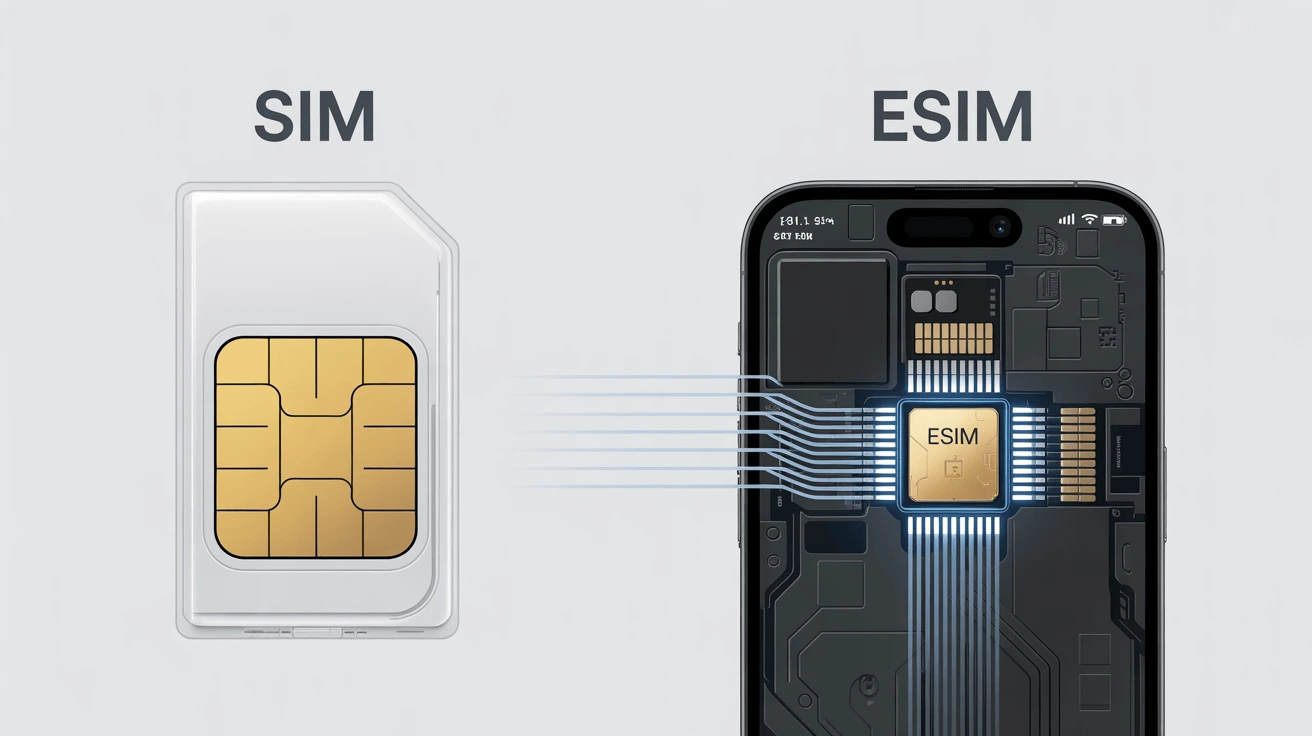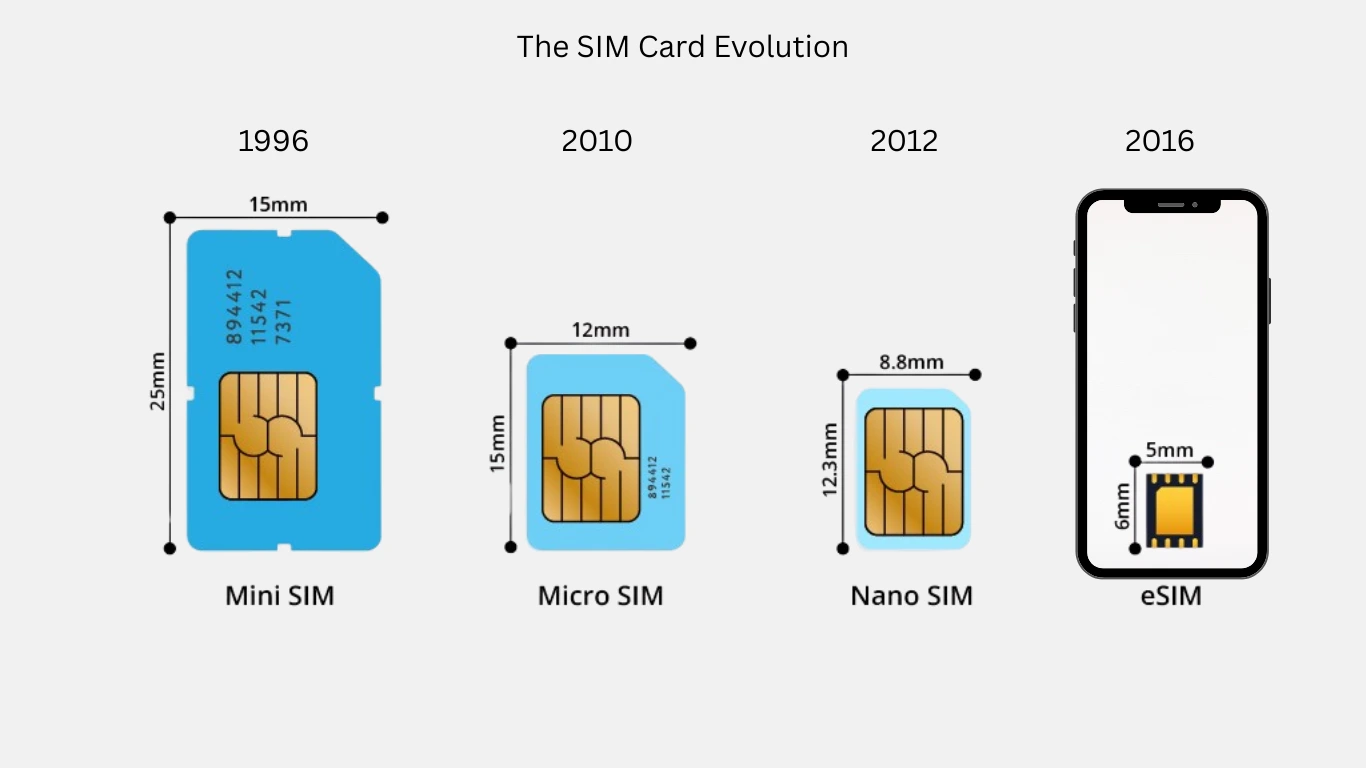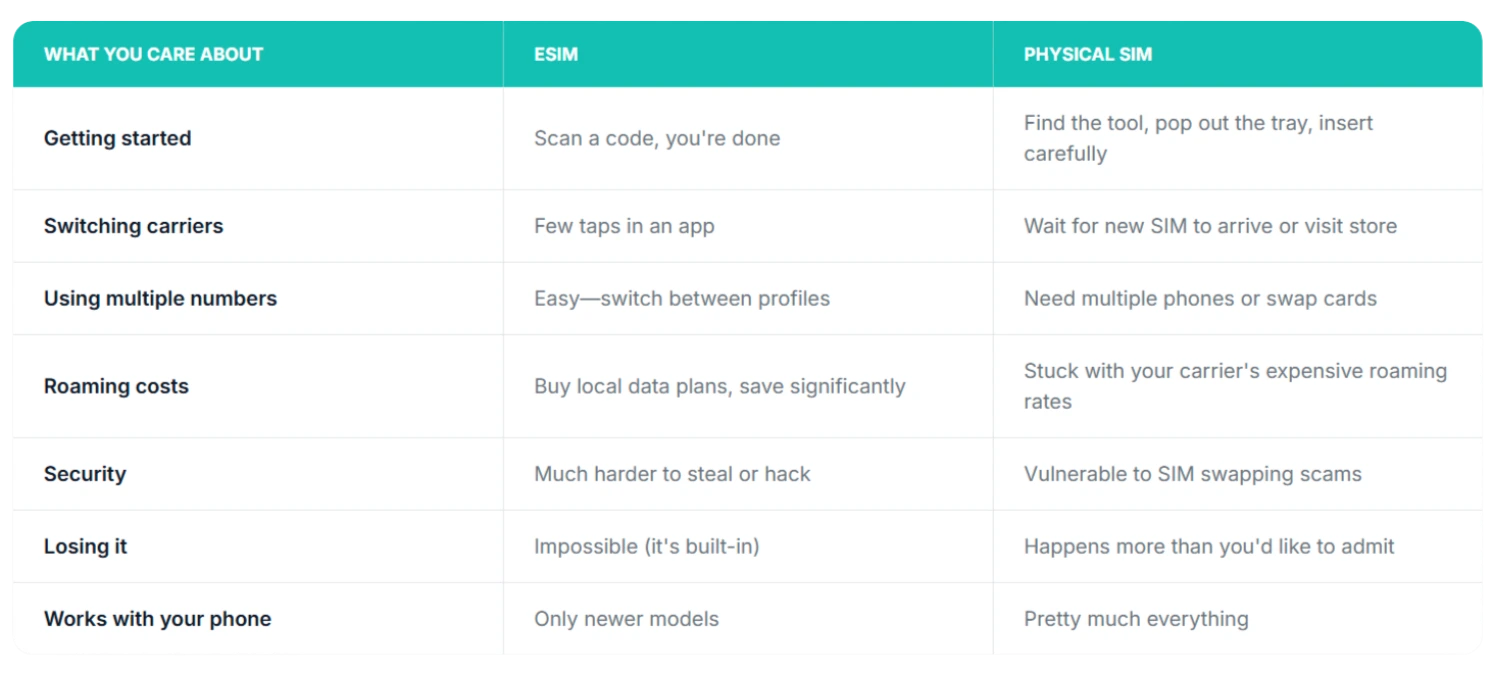eSIM vs Physical SIM in 2025: Should You Finally Make the Switch?
19/06/2025
Ever spent ages rummaging for that fiddly SIM tool (or just used a bent paperclip) whenever you needed to swap SIM cards? Those days are nearly behind us—and that's good news for your sanity and the environment. eSIMs cut out all that plastic waste and make getting connected a whole lot easier.

eSIMs aren't some fancy new tech anymore—they're everywhere. Your Android phone probably supports them, most carriers offer them, and chances are you've been wondering: "Should I actually make the switch?"
If you're tired of dealing with those tiny plastic cards or just curious about what all the fuss is about, here's what you need to know to decide.
Here's what we'll cover:
- What's the real difference between eSIM and physical SIM
- The honest pros and cons of each
- Whether it makes sense for your lifestyle
- When you should (and shouldn't) make the switch
- A few words on eSIM's environmental impact
No tech jargon, no sales pitch—just the info you need to decide what works for you.
How We Got Here: The SIM Card Evolution

Physical SIM cards have been doing their job for over 30 years. They've let you switch phones, change carriers, and grab local service when travelling. But let's be honest—they're also ridiculously easy to lose, break, or forget when you need them most.
eSIM was created to solve these headaches. No more plastic cards to misplace. No more digging around for that SIM tool. Just digital connectivity that works right away.
This isn't just about convenience though. It's part of everything getting smarter, smaller, and less wasteful. Each eSIM means one less bit of plastic in the world.
What Exactly Is an eSIM?
An eSIM (embedded SIM) is basically your SIM card built right into your phone. There's no physical card to insert—it's already there, waiting to be activated.
Instead of walking into a store and getting handed a tiny piece of plastic, you activate your eSIM digitally. Usually, that means scanning a QR code or using your carrier's app. Takes about two minutes, and you're connected.
It does everything a regular SIM does, just without the hassle.
👉 Want all the technical details? Read our complete what is an eSIM guide.
The Real Differences: eSIM vs Physical SIM

Why People Are Actually Switching to eSIM
1. Save Money on Roaming
Buy local or regional data plans and avoid inflated roaming rates—travelers save up to 90% on costs.
2. You Get Connected Instantly
Activate plans in minutes without waiting for shipping or visiting stores.
3. Multiple Numbers on One Phone
Maintain work and personal numbers on the same device with simple switching.
4. Travel Without the Stress
Set up your data plan before your trip and go online as soon as you land.
5. Better Protection from Scammers
eSIMs are tied to your device, making SIM swapping attacks much harder.
6. Your Phone Gets Better
Removing the SIM tray creates space for bigger batteries and better features.
7. Less Plastic Waste
No physical cards or packaging—it's better for the environment.
When You Should Stick with Physical SIM
Not everyone needs to jump on the eSIM bandwagon right away. Physical SIM cards still make perfect sense in several situations, and understanding when to stick with them can save you frustration.
Your Phone Doesn't Support It Yet
If you're rocking an older phone or chose a budget-friendly model, chances are eSIM isn't an option. Most flagship phones from 2018 onwards support eSIM, but budget devices often skip this feature to keep costs down.
Before considering any switch, check your phone's specifications. iPhone XS and newer models support eSIM, as do most recent Samsung Galaxy flagships, Google Pixels, and other premium Android devices. But if you're using anything older or more basic, you'll need to stick with physical SIM cards.
You Like Swapping Between Phones
Some people love testing new devices or maintain multiple phones for different purposes. Maybe you have a work phone, personal phone, and a backup device. With physical SIM cards, switching between phones takes seconds—just pop out the card and slide it into your next device.
eSIM transfers require internet connectivity and a few minutes of setup. While not difficult, it's definitely more involved than the instant swap you get with physical cards.
Your Carrier Hasn't Caught Up
Major carriers like Verizon, AT&T, T-Mobile, and most international networks offer eSIM support. But smaller regional carriers might not have invested in the infrastructure yet.
Before planning any switch, confirm your carrier supports eSIM activation. Most carrier websites list eSIM compatibility, or you can call customer service to verify.
Who Should Definitely Try eSIM?

If you fall into any of these categories, eSIM will likely improve your mobile experience significantly.
Frequent Travelers
For frequent travelers, eSIM is a complete game-changer. Instead of hunting for local SIM cards at airports or paying outrageous roaming fees, you can purchase and activate local data plans before you even leave home.
Consider this: International roaming can cost $10-15 per day, while local eSIM data plans often cost $20-30 for an entire week. For frequent travelers, the savings add up quickly.
Remote Workers
Remote workers who depend on reliable internet everywhere will love the flexibility. You can maintain multiple carrier connections simultaneously—if one network goes down, you instantly switch to your backup plan. Many remote workers use eSIM for their primary data connection while keeping their original physical SIM for calls and texts.
Dual Number Users
People juggling work and personal numbers no longer need to carry two phones. eSIM lets you have multiple phone lines on the same device, switching between them as needed. Set different ringtones, choose which number to use for calls, and keep your professional and personal life properly separated.
Students and Expats
Students or expats living abroad can maintain their home number while adding local service. Keep your family and friends' calls coming through on your original number, while using a local plan for daily communication and data.
Environmentally Conscious Users
Environmentally conscious users appreciate the reduced plastic waste. Every eSIM activation means one less plastic card manufactured, packaged, and shipped. While individual impact seems small, the collective effect is significant as adoption grows.
Who Should Wait?
Sometimes patience pays off. You might want to hold off on eSIM if these situations apply to you.
Older or Budget Devices
The technology isn't universal yet. Older phones and many budget models simply don't have eSIM capability. Before considering the switch, check your device specifications to confirm eSIM support.
Carrier Limitations
Carrier availability varies significantly by region. While major networks in developed countries offer eSIM, smaller regional providers might not have caught up yet. Rural areas or developing markets may have limited eSIM options.
Device Switchers
Heavy device switchers who regularly move between multiple phones might find physical SIMs more convenient. If you're constantly testing new devices or maintain several phones for different purposes, the instant swap capability of physical SIMs can't be beaten.
Digital Skeptics
Digital skeptics who prefer tangible, physical solutions might not feel comfortable with purely digital activation. There's something reassuring about holding a physical card that some users aren't ready to give up.
Is Everyone Really Switching?
The shift toward eSIM isn't just marketing hype. It's happening faster than most people realize, driven by real consumer benefits and manufacturer cost savings.
Apple made headlines by removing physical SIM slots entirely from US iPhone models, forcing American users to adopt eSIM. When Apple makes such a decisive change, other manufacturers typically follow within a few years.
Android manufacturers aren't far behind. Samsung, Google, and other major brands now include eSIM support as standard in their flagship devices, with even mid-range phones starting to include the technology.
Major networks have integrated eSIM activation directly into their mobile apps, making the switch as simple as scanning a QR code. In most developed countries, you can now activate an eSIM through an app no store visits required.
Industry predictions suggest that over 70% of smartphones will support eSIM by 2026. This isn't just wishful thinking it's driven by real consumer demand for convenience and flexibility, combined with manufacturer desires to eliminate physical components and carrier cost savings.
So, Should You Switch?

If your phone supports eSIM and your carrier offers it, switching is probably worth it. Here's what you get:
- Setup that takes minutes
- Stronger security against fraud
- Multiple numbers and plans on one phone
- No tiny plastic cards to manage
- Up to 70% to 90% saving on roaming fees
Still, physical SIMs are fine if your tech or carrier isn’t ready yet or if you just prefer the old-school way.
The best part? Most 2025 phones support both eSIM and physical SIM. Try eSIM and see how it goes. If it’s not for you, you can always go back.
Want to see real eSIM options? Check out Reload Now's travel eSIMs for instant travel plans and more.
Ready to Try It?
Let’s Make It Happen.
Why sit on the sidelines wondering how easy eSIM could make your next trip…
When you could just test it out right now in less than 5 minutes?
Here’s how it works:
-
Grab a travel eSIM (no new phone, no number change, no headaches)
-
Keep your regular SIM for calls and texts
-
Activate your eSIM before your next flight—and enjoy instant data the second you land
It’s literally faster than waiting for your latte.
And the best part?
Most carriers (including us) have made eSIM activation so easy, even your grandma could do it straight from an app.
No lines.
No hassle.
No tech degree required.
So what are you waiting for?
Click below, grab your travel eSIM, and unlock smooth, global data in minutes:
See you on the inside (or the other side of the world).
P.S. Don’t wait until you’re stuck at the airport scrambling for Wi-Fi.
Grab your eSIM now and travel like a pro!